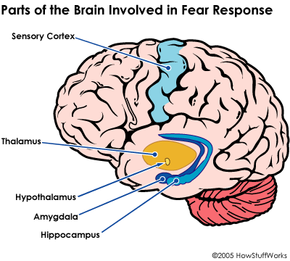You're walking through the park on an ordinary day when suddenly, without warning, you're stricken with acute fear. The world starts to spin. Everything around you seems unreal. Your heart beats so hard that it quakes in your chest, and your throat tightens. Frantic for your own breath, your mind screams, "Am I having a heart attack? Am I going crazy?" And, worst of all, "Am I about to die?" The panic keeps escalating until you feel like you just can't stand it anymore. Then, finally, it starts to sink away from you. Confused and embarrassed, you retreat to your car and go home where you know it's safe. You'll never return to that park again, you think. And then a more fearful thought pops into your head: "What if this happens again -- somewhere else?"
If you've ever had a panic attack, you're familiar with this kind of experience. Your body mysteriously triggers the fight-or-flight response when no danger really exists. Basically, you get the same sensations you might get if you heard a burglar break into your house in the middle of the night. Only, nothing nearly that frightening or threatening has actually occurred.
Advertisement
Although many people have only isolated panic attacks, others suffer from recurring attacks, which is a symptom of panic disorder. This disorder is fairly common; 2.7 percent of Americans 18 and up have it, which makes it more common than bipolar disorder, schizophrenia and obsessive compulsive disorder [source: NIMH]. Panic attacks can last anywhere from a few minutes to a half-hour, and they're gravely frightening and confusing for the victim. If left untreated, recurring episodes can lead to agoraphobia, where the fear of having an attack becomes so intense that the sufferer avoids all public places.
So, why would your body launch into a fight-or-flight response when no obvious danger exists? What's going on inside your body to trigger such an extreme physical reaction? Keep reading to understand the physiological processes behind the panic attack.
Advertisement




